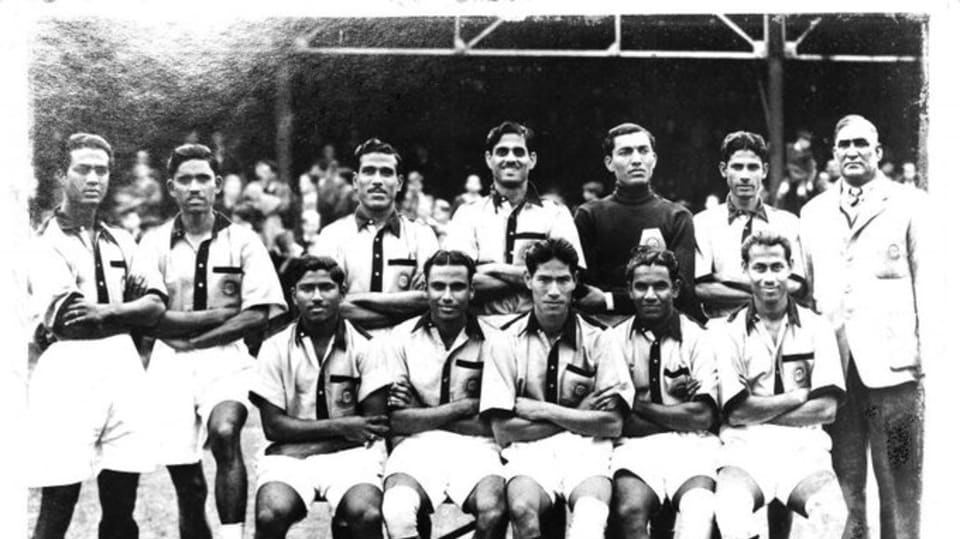Search This Blog
Sports Info Centre, your ultimate destination for everything sports! Whether you're a fan of traditional sports or passionate about the growing world of eSports, we’ve got you covered. Our platform is dedicated to providing you with the latest news, in-depth analyses, and updates from the world of sports, ranging from football, cricket, basketball, and tennis to the rapidly evolving eSports arena.
Featured
- Get link
- X
- Other Apps
The Rise of Football in India: A Journey of Passion and Progress
The Story of Football in India
Football, the beautiful game, has been a beloved sport in India for over a century. From its humble beginnings to its current status as a rapidly growing phenomenon, Indian football has come a long way. In this article, we will delve into the history of Indian football, its present situation, the national team, various competitions, and their impact on the sport.
A Brief History of Indian Football
The first recorded football match in India was played in 1854, when British sailors introduced the game to the country. The sport quickly gained popularity, and the first Indian football club, the Calcutta Football Club, was established in 1872. The Indian Football Association (IFA) was formed in 1893, and the country's first national championship, the Durand Cup, was inaugurated in 1888.
In the early 20th century, Indian football experienced a golden era, with the national team winning several international tournaments, including the 1951 Asian Games and the 1962 Asian Cup. However, the sport's popularity began to decline in the latter half of the century, with cricket emerging as the dominant sport in India.
The Present Situation of Indian Football
In recent years, Indian football has experienced a resurgence, thanks to the efforts of the All India Football Federation (AIFF), the governing body of football in India. The AIFF has implemented various initiatives to promote the sport, including the launch of the Indian Super League (ISL) in 2014. The ISL has brought top-class football to India, featuring international players and coaches, and has helped to increase the sport's popularity.
The national team has also shown significant improvement, with the men's team currently ranked 96th in the FIFA rankings, its highest position in over a decade. The women's team has also made strides, winning the 2019 SAFF Women's Championship and qualifying for the 2022 AFC Women's Asian Cup.
The National Team
The Indian national football team, also known as the Blue Tigers, has a rich history, having competed in several international tournaments, including the Asian Games, the Asian Cup, and the FIFA World Cup qualifiers. The team has produced several talented players, including Sunil Chhetri, who is the country's all-time leading scorer with 72 goals.
Under the guidance of coach Igor Stimac, the team has shown significant improvement, with a notable victory over Thailand in the 2019 AFC Asian Cup. The team's performances have also been boosted by the inclusion of Indian players in the ISL, which has provided them with valuable experience and exposure.
Football Competitions in India
India hosts several football competitions, including:
- Indian Super League (ISL): The top-tier professional league in India, featuring 10 teams from across the country.
- I-League: The second-tier professional league in India, featuring 11 teams.
- Durand Cup: The oldest football tournament in India, featuring teams from the ISL, I-League, and other top-tier clubs.
- Federation Cup: A knockout tournament featuring teams from the ISL and I-League.
- SAFF Championship: A biennial tournament featuring teams from South Asia.
These competitions have not only provided a platform for Indian players to showcase their skills but have also attracted top-class international players and coaches to the country.
Impact of Football Competitions
The various football competitions in India have had a significant impact on the sport, both domestically and internationally. The ISL, in particular, has brought a new level of professionalism to Indian football, with top-class infrastructure, coaching, and player talent.
The competitions have also helped to increase the sport's popularity, with the ISL attracting large crowds and high television viewership. The success of the national team in international tournaments has also boosted the sport's profile, with the team's victories being celebrated across the country.
Challenges and Opportunities
Despite the progress made, Indian football still faces several challenges, including:
- Infrastructure: The lack of quality infrastructure, including stadiums and training facilities, hinders the development of the sport.
- Funding: Indian football requires significant investment to compete with other top Asian countries.
- Competition from Cricket: Cricket remains the dominant sport in India, and football faces stiff competition for attention and resources.
However, there are also opportunities for growth, including:
- Government Support: The Indian government has shown a willingness to support football, with the launch of the Khelo India program, which aims to promote sports development in the country.
- Private Investment: The success of the ISL has attracted private investment, with several top Indian companies investing in football clubs and leagues.
- Growing Popularity: The increasing popularity of football in India provides a platform for the sport to grow and develop.
Conclusion
The rise of football in India is a testament to the passion and dedication of the country's football fans, players, and administrators. From its humble beginnings to its current status as a rapidly growing phenomenon, Indian football has come a long way. With the national team showing significant improvement, the ISL attracting top-class talent, and the government and private sector investing in the sport, the future of Indian football looks bright. As the sport continues to grow and develop, it is likely to become an integral part of Indian sporting culture, inspiring a new generation of football fans and players.
Popular Posts
Carlo Ancelotti and assistant Davide Ancelotti reportedly at odds over Real Madrid starting XI spot
- Get link
- X
- Other Apps




Comments
Post a Comment